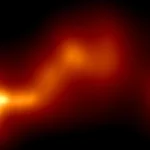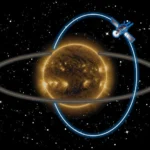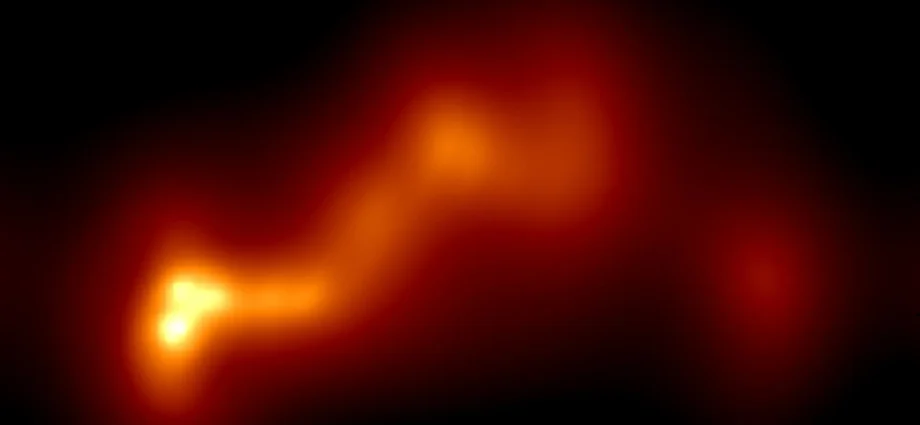For more than a century and a half, astronomers have been captivated by the distant galaxy OJ 287, located about five billion light years from Earth. Its puzzling variations in brightness have long hinted that two enormous black holes may be orbiting and merging at its center. Now, an international team led by Dr. Efthalia Traianou of Heidelberg University has captured a highly detailed image of the galaxy’s core, revealing features never seen before. Using a space-based radio telescope, the researchers produced an image that uncovers a sharply curved section of a plasma jet streaming from the galaxy’s center, offering fresh insight into the extreme environments surrounding supermassive black holes.
OJ 287 is classified as a blazar, a type of active galaxy known for its intense energy and brightness. At its heart lies a supermassive black hole that draws in matter from nearby space and propels some of it outward in colossal plasma jets filled with radiation, heat, magnetic fields, and heavy particles. “We have never before observed a structure in the OJ 287 galaxy at the level of detail seen in the new image,” said Dr. Traianou, a postdoctoral researcher working with Dr. Roman Gold at Heidelberg University’s Interdisciplinary Center for Scientific Computing.
The image penetrates deeply into the galaxy’s center, revealing a sharply bent, ribbon-like jet structure and providing clues about the plasma’s composition and motion. Some areas reach temperatures of around ten trillion degrees Kelvin, showing just how much energy is being released near the black hole. The scientists also detected a new shock wave forming and colliding along the jet, which they linked to trillion-electron-volt energy levels observed in an unusual gamma-ray signal detected in 2017.
To obtain this remarkable view, the researchers used a ground-space radio interferometer that combined a radio telescope in Earth’s orbit (the ten-meter antenna of the RadioAstron mission aboard the Spektr-R satellite) with 27 ground-based observatories around the world. By linking signals from these observatories, they effectively created a virtual telescope five times wider than Earth’s diameter. The extraordinary resolution of the resulting image comes from measuring how light waves overlap, taking full advantage of the wave properties of light itself.
The interferometric image underpins the assumption that a binary supermassive black hole is located inside galaxy OJ 287. It also provides important information on how the movements of such black holes influence the form and orientation of the plasma jets emitted. “Its special properties make the galaxy an ideal candidate for further research into merging black holes and the associated gravitational waves,” states Efthalia Traianou.
Institutions from Germany, Italy, Russia, Spain, South Korea, and the US all contributed to the research. It was supported by various research and funding institutions. The research results were published in the journal Astronomy & Astrophysics.
Space Exploration; Black Holes; Space Telescopes; NASA; Satellites; Dark Matter; Cosmic Rays; Extrasolar Planets











